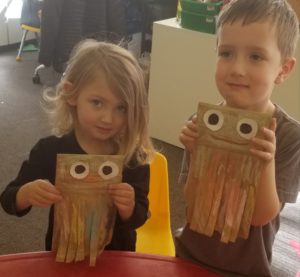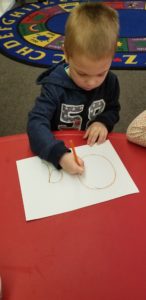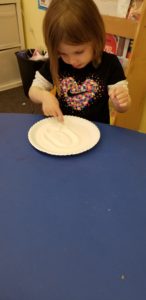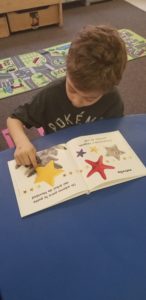EL OCEANO
This week we continued working with our “Ocean” Unit. The Oceans are very important to us as they cover about seventy (70) percent on the Earth’s water supply. They have the tallest mountains and the deepest valleys. Oceans affect weather and temperature, provide food, and a certain amount (approximately between 70 and 80 percent) of oxygen is produced by marine plants. So, it is important that children learn about it, and at the same time children will keep enjoying the ocean and its animals.
 This week we had fun with beach-inspired activities and games such as: jellyfish/medusa, marine turtle/tortugas marinas and crab/cangrejo. Children learned the life cycle of a sea turtle. They learned that sea turtles are one of the only existing animals that’s been around since the age of dinosaurs. The life cycle of the sea turtle is a long journey and only a few survive. While the sea turtles can live up to 80 years, they start out as small eggs buried in the sand. As well, they learned about the nesting and hatchlings: the female sea turtle will come to shore and dig a hole in the sand to lay between 50-200 eggs. She then buries the hole and heads back to the ocean. Around two months or 60 days later, the baby turtles break through their shells and dig out of the sand. They then must make their way to the ocean. The babies usually do this at night to avoid animals who might want to eat them, like crabs and birds. Once a baby reaches the water, it swims nearly non-stop to escape shore. If a baby sea turtle survives its trip to the open ocean, it gets caught by the current and floats around for miles feeding on algae and seaweed. The children were very interested in learning about the life cycle of a sea turtles.
This week we had fun with beach-inspired activities and games such as: jellyfish/medusa, marine turtle/tortugas marinas and crab/cangrejo. Children learned the life cycle of a sea turtle. They learned that sea turtles are one of the only existing animals that’s been around since the age of dinosaurs. The life cycle of the sea turtle is a long journey and only a few survive. While the sea turtles can live up to 80 years, they start out as small eggs buried in the sand. As well, they learned about the nesting and hatchlings: the female sea turtle will come to shore and dig a hole in the sand to lay between 50-200 eggs. She then buries the hole and heads back to the ocean. Around two months or 60 days later, the baby turtles break through their shells and dig out of the sand. They then must make their way to the ocean. The babies usually do this at night to avoid animals who might want to eat them, like crabs and birds. Once a baby reaches the water, it swims nearly non-stop to escape shore. If a baby sea turtle survives its trip to the open ocean, it gets caught by the current and floats around for miles feeding on algae and seaweed. The children were very interested in learning about the life cycle of a sea turtles.
LETRAS
This week we learned all about the letter Qq/ letra Qq. Be sure to point out the letter that we practice 
 when you are reading. The English letter Q(kiu). While the Spanish pronunciation is; Q (coo, always followed by “u” then followed by “e” or “i”. The combination “qu”, in Spanish is always a “kuh” sound que, quien, quiero). Some examples:
when you are reading. The English letter Q(kiu). While the Spanish pronunciation is; Q (coo, always followed by “u” then followed by “e” or “i”. The combination “qu”, in Spanish is always a “kuh” sound que, quien, quiero). Some examples:
Queso/cheese,
Quetzal/, quetzal,
Quitasol/umbrella,
Quince/fifteen
We did a variety of activities that the kiddos enjoyed since they had a variety of ways to learn the letter “Q” like letters games, coloring, letter recognition, fine motor and letter practice using sugar to write the letter into it and hands-on tracing letter.
NÚMEROS
This week we continued working with addition 1-10. We really dove in with the kids this week on understanding the concept of addition. We have been working with numbers 1 through 10 and number combinations. Now they know what happens when they add two numbers. We gathered up fishes and different ocean animals for the kiddos to add together different numbers of sea animals. They did a great job practicing addition with these hands-on manipulatives.
La Figura y El Color
This week we continued working with the star shape (estrella) and the color orange (naranja). The kids enjoyed coloring ocean animals such as the fish/pez and crab/cangrejo. They also used the colors that we are learning (rojo, azul, verde, rosado, purpura y/o morado, and amarillo). Also, we practiced fine motor skills with lacing our shapes: circle, square, rectangle, oval, start, heart, and triangle shapes.
Have a good weekend!

